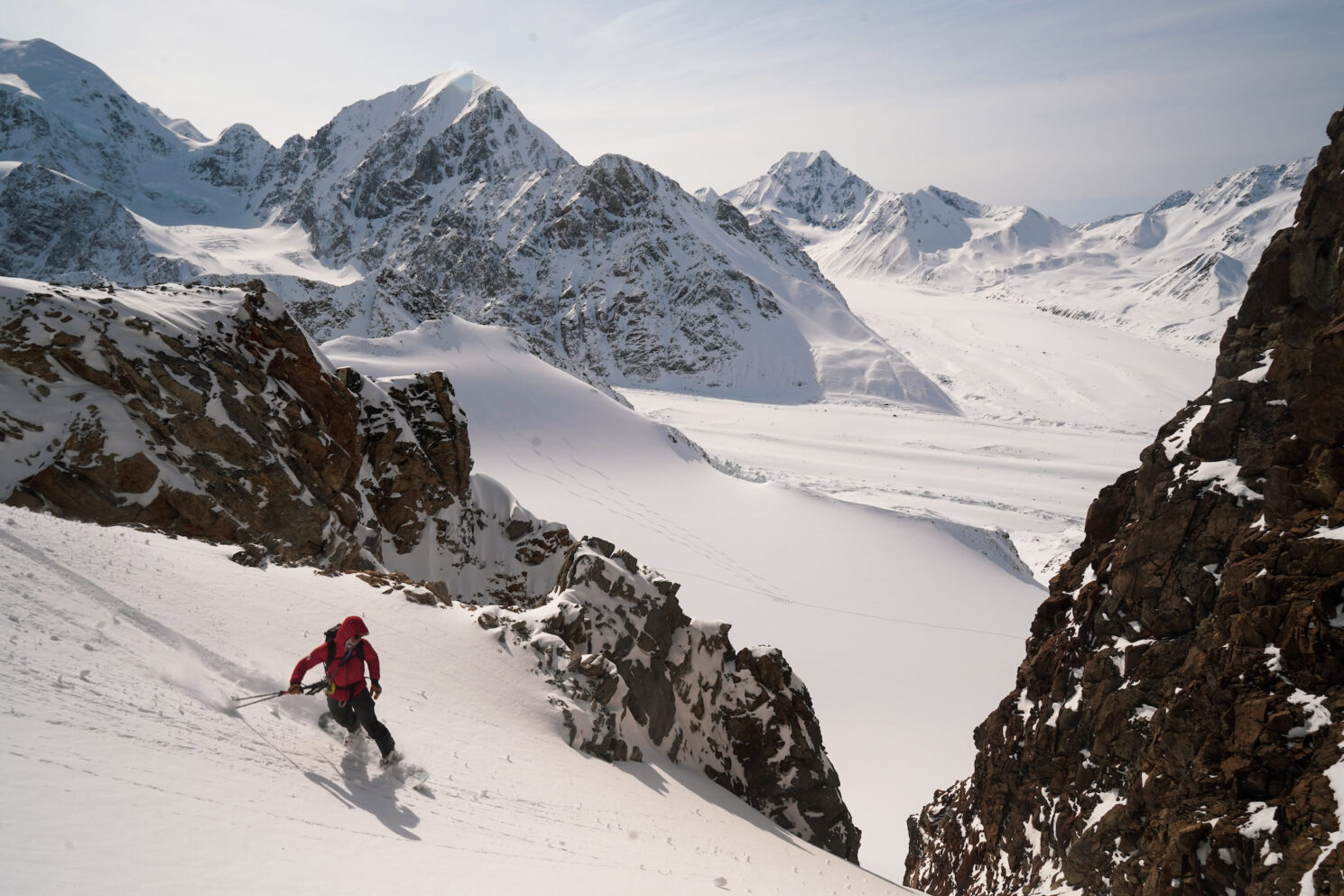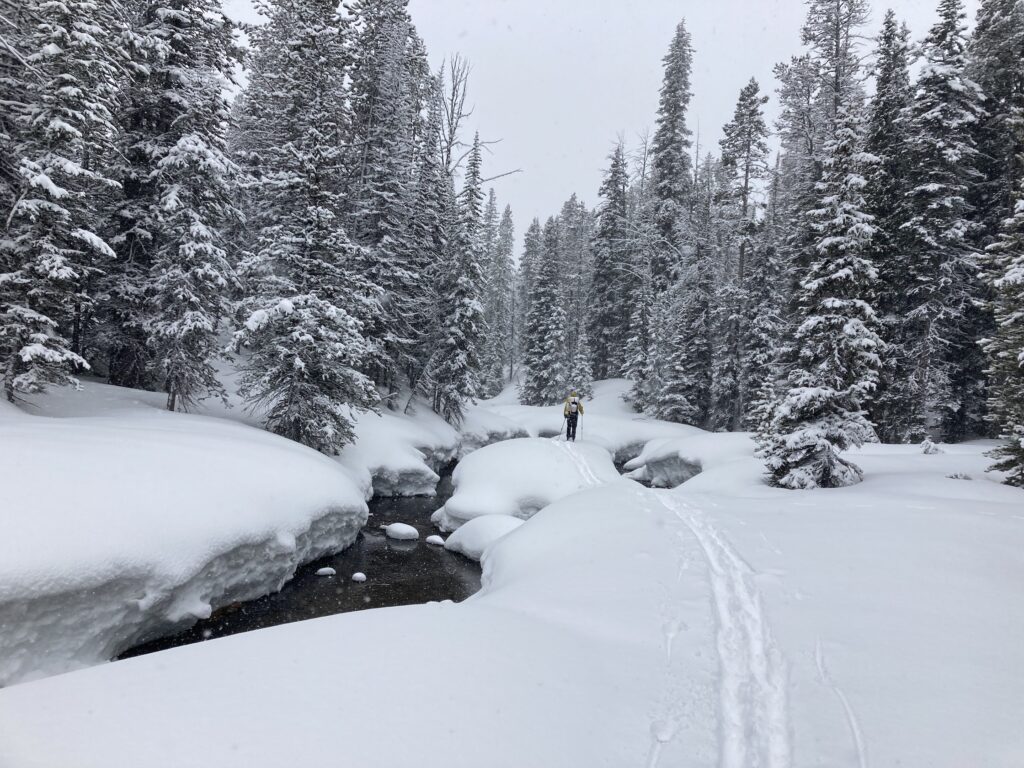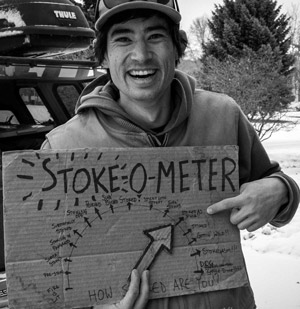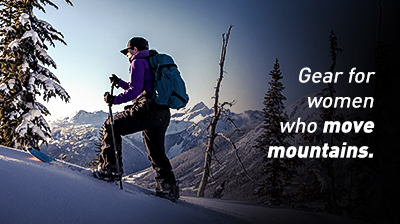
Indirect Mentorship in Backcountry Skiing: Planning, Learning, and Reflecting
Share this Post
As tele-mentorship continues to grow and mature, and I mean both introducing new folks to telemark and the use of digital communication to share mentorship remotely, I’d like to share an example of how this can like using the tools, space, and support model from part 1. Particularly, I think it’s a great chance to highlight and build from the knowledge shared by someone I consider a mentor.
How Digital Tools Enhance Indirect Mentorship
Last year Aaron Diamond wrote a piece for the Voile blog titled Avalanches and Tour Planning in which he shared a process for trip planning using digital mapping tools like Gaia or Caltopo to avoid avalanche terrain, map out persistent weak layers, and incorporate a regional avalanche forecast. This is a great example of sharing a specific and essential tool in the backcountry skiing toolbox. Aaron is really savvy when it comes to staying attuned to the changing snowpack through the winter season. I think two of the most important pieces of advice from his piece are…
“As with all of this, what you see on the map shouldn’t always be taken as gospel when things look a little different in the field. Remember, this is just a plan and plans can change with new or better information.”
And
“Finding an efficient and effective tour planning system will take some time as well as some trial and error. You should have a plan B that works for all conditions.”
These two excerpts emphasize the importance of situational awareness and adaptability given changing mountain conditions and the importance of having a reasonable pivot option (or options!) if Plan A proves untenable or exceeds your group’s risk tolerance.
I’d like to add a second layer that gets at the topic of “space” in the mentorship model.
Planning, Tracking, and Reflecting in Indirect Mentorship

If you’re using a digital mapping tool like Gaia or Caltopo like Aaron highlighted (and Caltopo is my preferred mapping tool as well), a different tool like Strava, or a GPS watch, there are many ways to actually track your route through the day.
When I’m going out for a day, I’ll use a tool like Caltopo to draw my planned tour and have it accessible on my phone even when offline. This involves downloading the appropriate map layers to highlight the information that I think is most important. For me, that’s typically a base topographic map layer, then satellite imagery, slope angle, and, depending on the season and snowpack, sun exposure, or a customized PWL tracker like Aaron demonstrated.
With these layers in hand, and my planned route loaded, I’ll then turn on tracking for the day and go have fun skiing. As I’m skiing, I’ll reference my map at key route-finding decision points and adjust my skin track as needed. What I won’t do though, is have my phone out every step of the way, attempting to follow my planned track exactly. As Aaron said, “This is just a plan and plans can change with new or better information.”
At the end of the day, I’ll then take the actual track and upload it to Caltopo on the same map as my planned route. This allows me to compare what I expected with what I actually found, and more importantly, revisit decision points and reflect on my observations in the field that led me to put my track in one place over another.
Learning Through Intentional Reflection
Over time, with enough repetition, this process of planning, executing, and reflecting can lead to two things. First is a more refined and accurate tour-planning process, recognizing map features and understanding how a map translates to reality; and second, being able to internalize a tour-plan and know when the critical decision points will occur during the day and setting yourself up to make those decisions at a reasonable time and place.
Having the right tools, whether it’s a reliable mapping platform or durable backcountry gear like Voile Splitboards and skis, can make all the difference in staying adaptable and confident on challenging terrain.
Between Aaron’s blog and this extension, we’ve covered the themes of tools and space. The obvious lingering question is where does support come from in a indirect mentorship model? I think there are a couple of different ways this can occur.
Support in the Indirect Mentorship Model
The first is through direct contact with a mentor. Whether they’re out on a tour with you, or you text or email photos and screenshots of tour plans and decisions, this is what most folks probably think of in the scope of mentorship.
Another way though, is through peer mentorship and co-learning. In educational psychology, this is known as social interaction and is often a very conducive environment for learning. As we spend time in the field with partners, our collective experience and intentional debriefing creates support for our individual learning.
The key here is intentional debriefing. Simply finishing a tour, high-fiving, and driving home doesn’t create support. At the same time, belaboring a debrief becomes a chore in itself and is often counterproductive to learning. My recommendation is to incorporate a couple of questions into the end-of-day conversation:
- Where were we (both individually and as a group) most at risk today? Was that risk acceptable to our group?
- If we were to come back here tomorrow, knowing what we know now, what, if anything, would we do differently?
- What did we nail in our pre-trip planning? What did we miss? What additional information would we want to gather for tomorrow?
Critical Reflection and Growth
These questions are intentionally open-ended and phrased with an eye toward critical reflection and growth. Whether you take these questions and this co-learning debrief model verbatim, or steal what you like and develop your own, I think that reflecting on the day is a critical part of continuing to develop our mountain sense, observational skills, and decision-making.
About The Author

Matt Zia
Location: Bozeman, MT
Top Gear Picks: Charger Ace 178cm / V8 186cm / OG Drifter 182cm with TTS
Website: www.montanamountaineering.org
Instagram: @ziapet / @montanamountaineering
Matt is a professional mountain guide and educator in the Greater Yellowstone Ecosystem, and is an AMGA Certified Rock guide and Assistant Alpine/Ski guide. He plans to finish his IFMGA certification and is one of only a handful of telemark ski guides. He currently works for Exum Mountain Guides and for the Montana Mountaineering Association, for which he is the Executive Director. As a person of mixed Chinese and American descent, he knows the importance of identifiable mentors in all aspects of life, both in the mountains and the valleys.
Matt’s passion for backcountry skiing lies in long adventures far from the road, and he counts bear spray as an essential part of his spring skiing kit. He can usually be found exploring the Greater Yellowstone Ecosystem with skis on his feet or ice tools in hand.
Share this Post



